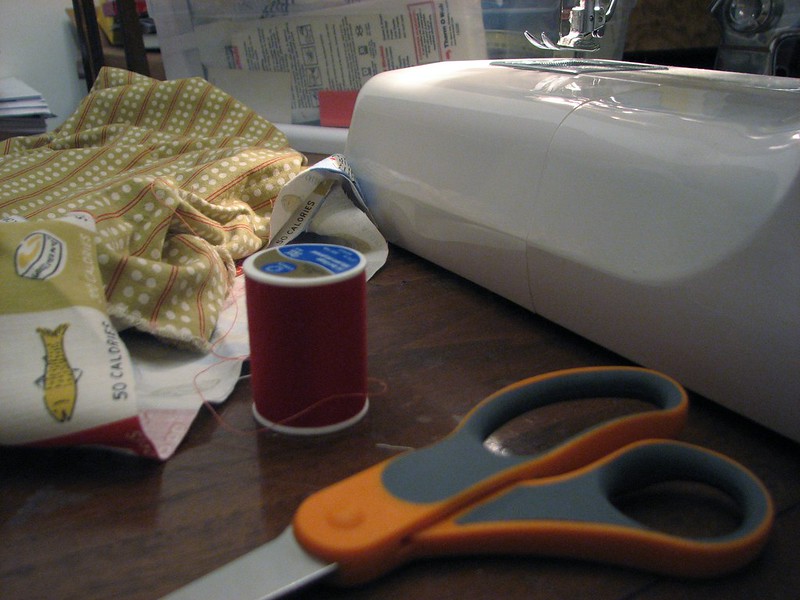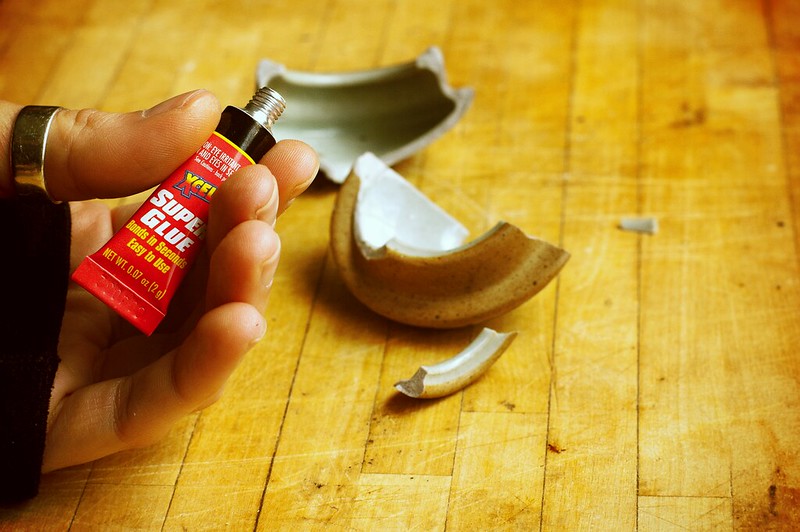Why Replace When You Can Repair?

“Sewing” by lisaclarke
It’s a cliché that we live in a throwaway age, but pay a visit to your local recycling centre and you’ll see this in action. Yes, many of the items there can either be re-used or have components harvested from them, yet a great deal of what you’ll find there will be headed straight for the landfill.
Contrast this with previous generations and you’ll find that, once upon a time, there was far more of a “make do and mend” approach. So, for example, if the toaster stopped working the first reaction was to try and fix it, or find a tradesperson who could.
But now it does seem like this sort of approach may be making something of a comeback. Ethical, environmental and economic concerns have started to make people think a little more carefully about their levels of consumption. In line with this trend, a number of websites have started to spring up with the purpose of providing hints and tips to readers about how to do many simple repairs with the aim of building up a nationwide community of fixers and menders.
In tandem with this, there also seems to be a growing trend to appreciate objects from the past, especially ones that have particularly cherished memories for us. One only has to look at the runaway success of TV’s The Repair Shop to see evidence of this. Admittedly, these are items being restored to near perfect condition by experts in their particular field. However, there’s no reason why all of us can’t start to make our own contribution to reducing waste and giving everyday items a whole new lease of life.

“Personal Agency” by CarbonNYC
You might imagine that the cost of the tools and items needed for repairs would be too high to justify buying them. On the contrary, for just a few pounds you could put together the sort of tool kit that could take on all kinds of repairs ranging from mending holes in moth-nibbled gloves to China teapots that have become separated from their handles.
For the former, it’s just a question of finding some darning wool of approximately the same shade. For the latter, it’s a case of having the right kind of glue for the job in hand. That’s because using an adhesive not formulated for a particular application will almost certainly result in a repair that fails or a bond that is not as resilient as it should be. So, with this in mind, do some thorough research and perhaps consider purchasing a versatile adhesive for repairs and upcycling. This cupboard staple is bound to come into use for lots of odd jobs around the house and is worth the higher price bracket (when compared with own-brand/cheaper alternatives).
Of course, there are some repairs around the house that are best left to experts – and some have to be by law. These generally include anything to do with electrical and gas appliances as well as physically-risky jobs like replacing TV satellite dishes or roof or gutter repairs.
Nonetheless, for the majority of little tasks that crop up around the home, maybe you should see if you can sort it yourself. Who knows? It could even turn into a hobby that you actually enjoy!


